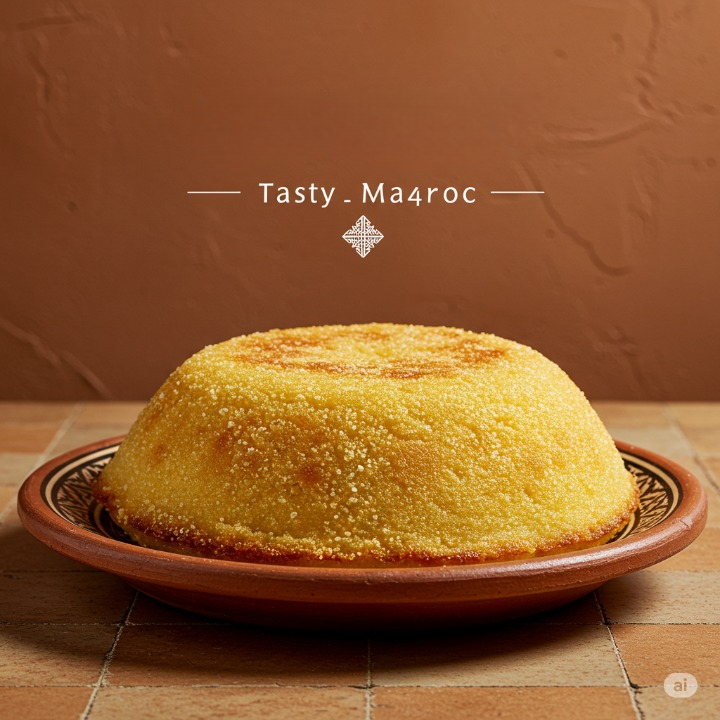
The Hidden Power of a Simple Ingredient
Walk into any Moroccan kitchen, and you’ll likely see a bottle of vinegar tucked next to olive oil, spices, and preserved lemons. At first glance, it might seem out of place — vinegar? In Moroccan cuisine?
But if you’ve ever enjoyed a rich tagine where the meat melts in your mouth or tasted a stew with a mysteriously tangy depth, chances are vinegar played a secret role.
In this article, I want to take you beyond the recipe — to the “why.” Why do Moroccan cooks add vinegar to certain stews and tagines? What does it actually do? And how can you use this simple pantry staple to elevate your Moroccan dishes at home?
🍷 1. Vinegar in Morocco: More Common Than You Think
Though vinegar isn’t as celebrated as olive oil or saffron, it has quietly been part of Moroccan kitchens for centuries. Whether made from wine, apples, or dates, vinegar is used in small but meaningful ways:
- In meat marinades
- In lentil stews
- To balance rich sauces
- Even to clean fresh produce
Growing up, I remember watching my aunt in Casablanca add just a splash of vinegar into the pot while making a lamb and chickpea tagine. When I asked her why, she simply said,
“It softens the meat and brings the spices to life.”
At the time, I didn’t fully understand. But years later, after studying both cooking and science, her answer made perfect sense.
🥄 2. The Science: Vinegar as a Tenderizer
One of vinegar’s superpowers lies in its acidity. Moroccan stews often use tougher cuts of meat — like lamb shoulder, beef shank, or even goat. These cuts are full of flavor but take time to become tender.
Here’s where vinegar shines:
- Acid breaks down proteins in the meat, helping it soften more quickly.
- It allows collagen to melt, which gives that silky, luxurious texture to stews.
- Just a teaspoon or two can make a noticeable difference, especially when cooking slow over charcoal or clay tagines.
Important note: Too much vinegar can overpower a dish — in Moroccan cooking, it’s all about balance and intuition.
🍋 3. Flavor Enhancement: The Subtle Tang
If you’ve eaten tagine with prunes, you know that Moroccan food isn’t just about spice — it’s about contrast: sweet and savory, earthy and bright.
Vinegar acts like a secret seasoning:
- It sharpens the spices (like cumin, ginger, turmeric).
- It balances sweetness from ingredients like carrots, raisins, or prunes.
- It adds a depth that you feel more than taste — a tang that wakes up your taste buds.
I once made a lentil stew without vinegar, and it tasted flat. The next time, I added just a touch of red wine vinegar — and suddenly, the dish had life.
🧄 4. Traditional Dishes That Use Vinegar
While not every Moroccan recipe includes vinegar, several regional dishes rely on it for both flavor and technique.
Here are a few:
- Loubia (white bean stew) – a splash of vinegar at the end adds brightness.
- Khlea (preserved meat) – vinegar is used during preservation.
- Lamb & chickpea tagine – vinegar helps soften the meat and elevate spices.
- Spicy lentil soup (Harira-style) – vinegar rounds off the acidity from tomatoes.
Many home cooks don’t even write it in the recipe — it’s passed down as a kitchen habit.
🧂 5. Vinegar vs. Lemon: What’s the Difference?
Moroccan cuisine uses both vinegar and lemon juice — often for similar reasons. So which should you use?
Vinegar is stronger, sharper, and more complex, especially in small doses. Lemon is fresher and adds a citrusy punch.
Here’s a general guide:
- Use vinegar for meat stews, beans, and long-cooked dishes.
- Use lemon for salads, grilled meats, and finishing sauces.
In some cases, both are used — like in Moroccan chermoula, a marinade made with garlic, herbs, spices, lemon juice, and sometimes vinegar for extra depth.
🍲 6. Personal Touch: How I Use It in My Cooking
When I started hosting Moroccan dinners for friends abroad, I noticed something strange: my stews tasted different. Not bad — just… missing something.
I was using all the same ingredients — cumin, cinnamon, saffron, olive oil. But I had skipped the vinegar, thinking it was optional.
One night, I added a single capful of apple cider vinegar to my lamb tagine. The next day, my friend said,
“This tastes like the real thing — like something I’d eat in Marrakech!”
That’s when I realized: vinegar might not be the star, but it makes the whole dish shine.
🧴 7. Which Vinegar to Use?
Moroccan households typically use what’s available, but here are the best types for authentic flavor:
- Red wine vinegar – most traditional, adds deep flavor
- Apple cider vinegar – softer, slightly fruity, perfect for legumes
- Date vinegar – rare but used in southern Moroccan cooking
- White vinegar – used more for cleaning and preserving than flavor
Tip: Avoid balsamic vinegar — it’s too sweet and syrupy for Moroccan dishes.
📌 Final Thoughts: A Small Ingredient with Big Impact
So the next time you’re preparing a Moroccan stew — whether it’s lentils, lamb, or even vegetable tagine — consider reaching for the vinegar bottle.
- It’s not about making the dish sour.
- It’s about making the dish deeper, rounder, and more satisfying.
- It’s a culinary hack our grandmothers knew without needing to explain it.
Sometimes, it’s the quiet ingredients that make the loudest difference.
💬 Have You Tried It?
Do you use vinegar in your Moroccan recipes? Do you notice the difference in texture or flavor? I’d love to hear your experiences — especially if you’ve learned this tip from family or trial and error.
Share your story in the comments or on social media using #MoroccanVinegarHack 🍲



